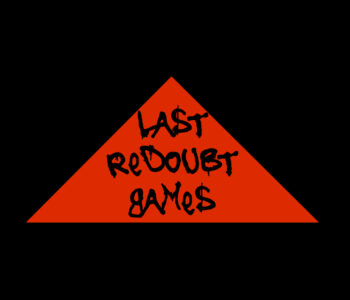 News & Updates
News & Updates
Venture Into the Weirdwood…
This year I’ve shared two prototype roleplaying games I’ve been working on for a while. I’ve written a bit about Crimson Seas, which has existed in various forms over the last five or six years, but haven’t shared a lot behind Hounds of the Tsar. I’ll probably save a detailed overview of the later until I get around to doing some playtesting and release an updated version of the game. In the meantime, though, I wanted to share a new project that I’ve been working on the last week or so. The game is called Weirdwood, and it requires a little explanation.
Rules-Lite, Freedom-Heavy
Hounds of the Tsar is a pretty rules-lite game, but it feels like Rifts compared to Weirdwood. It’s a game with no stats whatsoever. There’s no combat system, no skill system, no real character creation system. Aside from a very simple resolution mechanic and a few tokens, the game has no “hard” rules at all.
That’s by design. Weirdwood borrows heavily from John Harper’s Ghost/Echo, which is one of the most interesting games I’ve played in recent years. To be honest, it completely changed the way I thought about RPGs. Ghost/Echo is a two-page game. That’s it. Aside from a simple resolution mechanic, all it gives you to work with are a couple of evocative images and several lists of people and places. To make the game playable, you have to fill in the details. It doesn’t even tell you how to do this, but when I ran the game, I asked the players questions about the setting and their characters, then built the game session around that. The couple of times I’ve played the game have been some of the most fun gaming sessions I’ve had in years. Ghost/Echo never fails to deliver exciting and memorable moments.
But back to Weirdwood. The concept for the game goes back to my 2017 trip to Helsinki, Finland. For some reason, the name got in my head and as I explored the city, every tree, park, and wooded area fit into a growing concept of a primordial forest that existed in a parallel dimension just beyond human perception. This is well-trod ground, obviously, and I’ve even taken to referencing the “Upside Down” from Stranger Things to explain the concept. But I still found it pretty evocative. Something about Helsinki really sparked my imagination, and I came away from it wanting to write a book about it.
Unfortunately, I already have a lengthy backlog of book ideas. While a graphic novel would probably be the medium best suited to the idea, going back through a lot of old White Wolf World of Darkness rulebooks (Vampire the Masquerade, Werewolf the Apocalypse, etc) made me think that it might make for a good roleplaying game.
So. Many. Rules.
As I’ve gotten older, I have more and more problems getting into roleplaying games. There are more cool game settings than every, but they all have so much setting material to absorb. Reading all of that information and then finding ways to convey it to the players just makes my head hurt at this point. These details seldom even matter all that much to players anyway. If they wanted all those people, places, and events they could just go read a book.
And then there are the rules. So many damn rules. I’ve gotten to a point where I just don’t care about rules anymore. I don’t want to keep track of hit points. I don’t want to remember every character ability and spell effect. I don’t want to figure out how many plusses players get for equipping “magic item X.” I just don’t give a shit. It’s boring and tedious. I love the thrilling moment when a combat encounter begins and the players wonder what they’re going to do next, but I’m ready to fall asleep within two rounds when it descends into battlefield positioning and endless rounds of dice rolling as enemies are mathematically whittled down to oblivion.
Running Ghost/Echo made me realize that it doesn’t have to be that way. One of the reasons games have so many rules is to provide a consistent game experience no matter who is playing the game. Without rules, games would descend into chaotic sessions of cops and robbers in which no one can agree who can do what and when.
Ghost/Echo implicitly looks at this problem and says “So what? You’re adults, figure it out.” While it never comes out and says as much, the game’s lack of rules structure is built on the assumption that the people playing it are engaged in a collective experience that they are creating together. If someone pushes things too far, breaking the internal logic of the game they’re creating, then the game trusts them to rein that person in. Sure, there’s no rule saying you can’t magically produce a super weapon during a combat encounter, but the rest of the players will look at them like they’re an idiot and tell them they can’t just do whatever they want. In the times I’ve run that game, I never had a player push back when they were told that what they wanted to do wasn’t in keeping with the internal logic of the game we were playing.
Collaborative Gaming
Which brings us back to Weirdwood. The game provides a basic premise for a setting, describing the concept of the Weirdwood and how it generally works, but it leaves it to the group to decide how it all works in practice. Essentially, every group that plays this game should have a totally unique experience. The Weirdwood and its denizens may appear and behave one way in one game, but in a totally different way in another. It’s a game that puts a lot of pressure on the players and the GM to collaborate and create the details they need to run the setting effectively. It’s a challenge, but in my experience, players are far more engaged in a game when they feel like they’ve had a hand in creating it.
This initial playtest version of Weirdwood gives groups just enough to create their version of the Weirdwood and generate their own characters. There are no character sheets. A simple sheet of paper is more than enough to keep track of everything players need to know. At some point in the near future, I will provide setting sheets groups can use to record all the important information about the world they’re creating. This isn’t just for their benefit. At some point, I’d love to make it possible for groups to share their different setting locations with other players. In a later playtest version, I’m going to include a “sample setting” using Helsinki, which will always be my own canonical version of the Weirdwood. However, I’d love to know what a group in Missouri could tell me about the Weirdwood in St. Louis, or discover the many forms it might take in different neighborhoods of Los Angeles.
Weirdwood Rules Update
I made some updates to the initial playtest demo of Weirdwood to overhaul the core resolution mechanics. After giving the system some thought, I decided that the game needed something a bit more complex than the very simple mechanic I had in place before.
The new version of the game has been updated to incorporate these changes. It’s still a very rules-lite system that requires quite a bit of judgment calls on the part of players and GMs, but actions no longer hinge entirely upon the outcome of a single die roll. Borrowing a bit from multiple games I’ve encountered over the years (with a big nod to OneSevenDesign’s Lady Blackbird, the Ubiquity system from Hollow Earth Expedition, and Evil Hat’s FATE Accelerated) the new resolution mechanic involves building and managing dice pools that change over the course of play.
I’ve also designed some play sheets to help keep track of character and setting details. They’re pretty simplistic at this point, but they get the job done.
If you want to have some music to put you in the right frame of mind as you’re waiting for the final game, check out the Weirdwood playlist I put together on Spotify.









